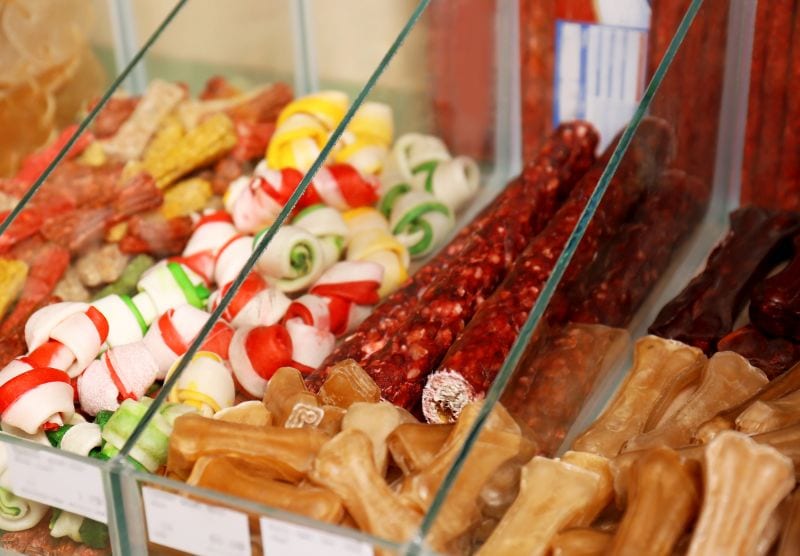Rawhide strips are a common favorite among dog owners and their furry friends due to being a relatively inexpensive and clean treat.
However, these rawhide bone chew treats can actually be detrimental to a dog’s health for a variety of reasons.
Namely, rawhide chews are not particularly digestible, and they tend to come in all manners of hard, angular shapes and sizes.
A swallowed rawhide can not only be a significant choking hazard, but it can also very well lead to intestinal blockages and other life-threatening conditions that require an immediate trip to the vet.
In this article, I’m going to help you understand the dangers of giving your dog rawhide strips, as well as exactly what to do if your dog swallows one (or a few).
Finally to finish off, I’ll give you some better alternatives to try with your dog instead!
(Side note: I am a member of the Amazon Associates program. From time to time I like to recommend products in my posts that I feel may truly be helpful to readers and their pets. If you do end up buying something by clicking the links on my site, I may receive a tiny amount of commission from the big guys.
And if you do end up buying something- Thank you! I really appreciate your support and I’ll always do my best to put out more quality content for you )
Does a rawhide break down in a dog’s body?
According to the data available (which examined rawhide digestibility in vitro, or inside test tubes filled with simulated digestive fluids), rawhide breaks down a tiny bit in a dog’s stomach, and then it breaks down a little bit more in a dog’s small intestine. But — in the best-case scenario — the rawhide only broke down 41.6% (and this took 18 hours), which means that the majority of the rawhide remains undigested.
Consider Rawhide Alternatives in the Future

Unfortunately, accidents happen, but with a few tweaks to your pup’s treat arsenal, he might still be able to enjoy all the fun of a chew without as much of a risk.
Just check with your vet first, especially if he’s required surgery for a prior swallowing adventure, and always monitor him when he has a chew.
With all that in mind, you need to look at what your dog is chewing to avoid these kinds of issues in the future.
Rawhides are a touchy subject with pup parents, and with good reason, as these dried and rolled beef hides aren’t the safest option out there (although some brands of rawhides are certainly better than others). Like all chews, they have an inherent risk of choking, but they also expand when wet, upping your pooch’s risk of a bowel obstruction if swallowed.
This is worsened as he drinks water, trying instinctively to flush it from his system. Because of this, many owners opt to skip rawhides entirely, opting for other dog chews options.
Your dog can chew a little safer with rawhide alternatives, including:
Are Rawhide Bones Good for Dogs?
Rawhide bones, which basically consist of the inner part of the hide of a bovine livestock, are typically sold in pet stores as chew treats, and they may come in different shapes and sizes. Rolls, twists, sticks, braids, or hand-tied bones are just a few examples. Although rawhide is advertised as a way of scraping away plaque, controlling the build-up of tartar, massaging gums, diminishing bad breath, and entertaining the dog for hours, there are concealed risks all pet owners must be aware of when purchasing these apparently innocuous dental chews.
FAQ
Does rawhide break down in a dog’s stomach?
What happens if my dog swallowed rawhide?
How do you know if your dog has a rawhide blockage?
- Abdominal bloating.
- Abdominal pain.
- Burping.
- Dark, tarry stools.
- Dehydration.
- Depression.
- Diarrhea.
- Excessive drooling.